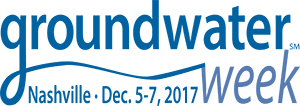Applied Geophysics to Create Insight and Reduce Uncertainties
Monday, December 4, 2017: 1:30 p.m.
101 D (Music City Center)
Max Halkjaer
,
Water and Natural Resources, Aarhus, Rambøll
Peter Thomsen
,
Water and Natural Resources, Aarhus, Rambøll, Aarhus N, Denmark
Delineating the architecture of aquifers and aquitards is essential when modelling and managing groundwater resources. The geophysical method time-domain electromagnetic (TDEM) has over the last two decades shown to be an efficient tool in areas with sparse data coverage.
Water scarcity due to climate changes and over abstraction make it very important to establish groundwater sustainability plans based on accurate hydraulic flow models. Often scattered and uneven spatially distributed boreholes and general geological maps are the only information available knowledges of subsurface conditions. Geophysical data, including TDEM, are therefore used in order to minimize model uncertainties.
TDEM is a non-intrusive, effective and cost-efficient method for obtaining information about the subsurface to 400m and sometimes even deeper. With the TDEM method, the hydrogeology can be described as variations in electrical resistivity. By comparing the resistivity with information from boreholes, the distribution of the different sediments can be described and thus create a valuable base for defining the basin boundaries or setting up flow models.
Due to high contrast in conductivity of fresh and brackish groundwater, the TDEM method is particularly suitable for mapping the mixing zone between fresh and saline water, which is important when sustainably managing groundwater abstraction in coastal areas or well fields influenced by saltwater intrusion.
When designing Aquifer Storage and Recovery (ASR) solutions, the TDEM method can be used for delineating areas having hydraulic conditions suitable for infiltration of surface water or treated waste water. In same way, data can help minimizing uncertainties when designing where to extract recharged resources.
The presentation will showcase different case studies where the TDEM method has played a key role in creating insight in the hydrogeological conditions. The method has been applied since the early 90’s and is the basis for the development of airborne systems for large scale mapping purposes.
Max Halkjaer, Water and Natural Resources, Aarhus, Rambøll
Max Halkjaer has a +20 year career as a hydrogeophysicist. He obtained his Master degree in geophysics at Aarhus University, Denmark in 1995.
He has contributed to a large number of projects across the world with a focus on protecting groundwater aquifers and groundwater sustainability.
With an entrepreneurial mindset he has been involved in the development of GIS based tools used for analyzing water quality, processing geophysical data and interpreting the geometrical extent of aquifers. He is the co-founder of the company SkyTEM Surveys providing airborne geophysics developed specifically for groundwater mapping. He has comprehensive experience with assessing and modeling the interaction of fresh and saline water in arid as well as very humid geographical areas.
Peter Thomsen, Water and Natural Resources, Aarhus, Rambøll, Aarhus N, Denmark
Peter Thomsen is a respected geophysicists currently employed at Ramboll, a large consultant company operating in most parts of the world. For the last 15 years he has been involved in the Danish national groundwater mapping program. He graduated (M.Sc. in environmental geophysics) from University of Aarhus in 1998, and apart from Ramboll, has been employed as a research assistant at the University of Aarhus, Geoscience. In this position Thomsen had a great influence on development of geophysical equipment, setting up standards and optimizing measurement procedure used in the geophysical mapping program.



